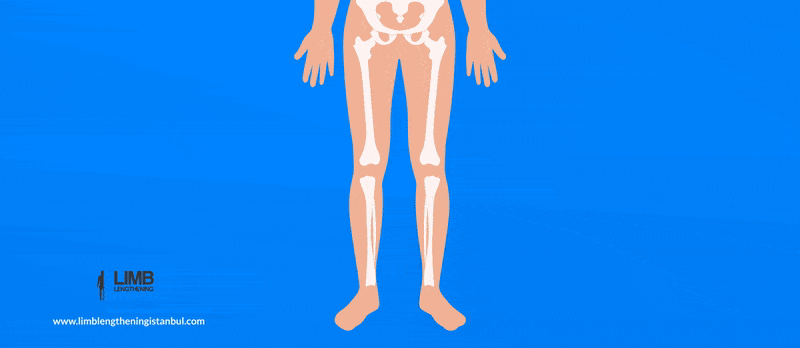Precice 2 is one of the most advanced extending nails created by Nuvasive Technology. Precice intermodular nails can be manipulated remotely. These nails are inserted into bones. After Precice nail placement, lengthening will be regulated by a remote control.The Precice 2 approach offers patients the most comfortable and secure leg lengthening surgery experience available. The Precice intramedullary nail is titanium and electromagnetically operated, allowing the Precice 2 nail to perform this incredible feat. The Precice 2 nail's motorized feature allows it to be extended remotely by pushing a single button. Because it does not require an external fixator, Precice 2 leaves less scars and has fewer infection concerns. Precice 2, unlike the LON approach, is not weight-bearing.
Key Benefits
 Less procedures
Less procedures
Patients treated with Precice for limb length discrepancy (LLD) have less surgeries than previous standard of care.
 Preferred by Patients
Preferred by Patients
Physical therapy is less challenging, patients can return to full range of motion (ROM) and daily activity quicker.
 Less pills Usage
Less pills Usage
Pain scores and length of time required for prescription pain medication is significantly lower than previous standard of care.
 Avoid operating on the healthy limb
Avoid operating on the healthy limb
It is no longer required to shorten the healthy limb to avoid pain and issues associated with an external frame.
 Faster healing
Faster healing
It takes an average of 31.3 days to heal with Precice compared to 47.1 days with an external device.
 Weight bear faster
Weight bear faster
Earlier ability to bear full weight without aids compared to a mono-lateral frame.
 Faster Formation
Faster Formation
Regenerate forms faster with less deformity.
 Precision
Precision
Able to accurately achieve desired lengthening through ERC technology.
 Less Wounds
Less Wounds
Patients significantly happier with fewer scars.
Precice 2 Parts
External Remote Controller (erc)
When you press the button on the External Remote Controller, it gets longer. It's a small magnetic device. So, it makes it possible for a controlled process of lengthening. Following the surgeon's instructions, the PRECICE ERC is made to exactly extend the tibia or femur. The main part of the technology is the non-invasive magnetic interaction between the PRECICE implant and the hand-held, portable PRECICE External Remote Controller (ERC). This interaction makes the PRECICE nail longer. It is designed to be used in a professional setting or in the comfort of the patient's own home. Regular x-rays and medical exams are done to make sure that the bone is growing and stretching properly. The surgeon can change the rate of lengthening based on the quality of the new bone.
ERC Usage During Lengthening
What the surgeon decides is how many individual stretching sessions need to be done every day and how long each session should last. Patients are generally told to daily stretch their bones by 0.75 to 1 mm (0.03 to 0.04 inches; 1 inch is 25 mm).
For example, a patient might be told to lengthen their limbs by 0.25 mm over the course of four different sessions during the day, for a total of 1 mm each day. It would take about two minutes of ERC sessions to make the bone 0.25 mm longer. Every day for four weeks, it would take eight minutes.
Intramedullary Precice Nail
As an internal fixation, the titanium metal intramedullary nail or rod is used. That is made up of a magnetic motor that can receive signals from the ERC and move the ball screw device. The doctor figures out the nail's size by looking at the X-ray pictures. It is surgically put into the bone during the process and comes in sizes of 8 mm, 10 mm, 10 mm, 11 mm, or 12 mm. The nail doesn't have any chemicals that could hurt the body, so it is nontoxic.

Precice 2 Operation
The surgeon and his or her team plan the operation based on a full X-ray and physical exam done before the procedure. With more than 25 years of experience, our doctor is a skilled PRECICE practitioner who has done treatments to lengthen limbs and fix deformities. The process, which is done while the person is under general anesthesia, includes the following steps:
- Giving out drugs for general
- The internal medullary tube that is being drilled
- Cutting through bone
- PRECISELY putting in an intramedullary nail
- Screwing the proximal part of the intramedullary nail into the bone.
The process will take about two to three hours, and there is an anesthesiologist and his or her team ready and present. The doctor makes sure that every cut is less than 1 cm long and as small as possible. At every step of the process, quick x-rays are taken to make sure everything goes smoothly. Professionals from PRECICE are there during the surgery and work with our doctors. After making sure everything is okay, our doctor finishes the surgery by closing all of the patient's cuts with ornamental stitches. After making sure everything is okay, stitches will be used to close all of the patient's cuts.
Walking in Precice Method
Most of the time, we tell our patients to use a gadget to help them walk. If you walk without any support, you might put too much stress on the nail, which could break, bend, or lose its ability to grow. In this case, the dentist has to take out the nail and put in a new one. Because of this, patients shouldn't try to walk without help. Physiotherapists at LLI teach their patients how to walk with a walker by having them put some of their body weight on their arms. This is called "partial weight bearing." In the lengthening phase, patients are moved around with the help of a wheelchair or walker and a partial weight-bearing method.
Consolidation on Precice
The freshly generated callus (new bone tissue) hardens and consolidates during the consolidation phase. The patient must use an assistive device to walk for a while during the consolidation period because to the partial load-bearing capabilities of the Precice 2 intramedullary nail. The rate at which new bone tissue forms determines when walking with full weight bearing is appropriate. The patient can walk with full weight bearing once the callus tissue has grown strong and rigid enough to support the weight. Walking with full weight bearing speeds up the return to normal physical capabilities. The patient reaches their maximum preoperative physical capacity as their balance improves and their soft tissue adjusts to the new bone size.


